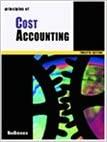Question
The Gilster Company, a machine tooling firm, has several plants. One plant, located in St. Falls, Minnesota, uses a job order costing system for its
The Gilster Company, a machine tooling firm, has several plants. One plant, located in St. Falls, Minnesota, uses a job order costing system for its batch production processes. The St. Falls plant has two departments through which most jobs pass. Plantwide overhead, which includes the plant managers salary, accounting personnel, cafeteria, and human resources, is budgeted at $250,000. During the past year, actual plantwide overhead was $242,000. Each departments overhead consists primarily of depreciation and other machine-related expenses. Selected budgeted and actual data from the St. Falls plant for the past year are as follows.
| Department A | Department B | ||||||
| Budgeted department overhead | |||||||
| (excludes plantwide overhead) | $ | 97,500 | $ | 540,600 | |||
| Actual department overhead | 120,000 | 558,600 | |||||
| Expected total activity: | |||||||
| Direct labor hours | 56,000 | 15,000 | |||||
| Machine-hours | 13,000 | 53,000 | |||||
| Actual activity: | |||||||
| Direct labor hours | 58,500 | 14,000 | |||||
| Machine-hours | 13,700 | 55,000 | |||||
For the coming year, the accountants at St. Falls are in the process of helping the sales force create bids for several jobs. Projected data pertaining only to job no. 110 are as follows.
| Direct materials | $ | 21,500 | |
| Direct labor cost: | |||
| Department A (2,400 hr) | 36,000 | ||
| Department B (800 hr) | 11,600 | ||
| Machine-hours projected: | |||
| Department A | 100 | ||
| Department B | 1,200 | ||
| Units produced | 12,000 | ||
|
| |||
Required:
a-1. Assume the St. Falls plant uses a single plantwide overhead rate to assign all overhead (plantwide and department) costs to jobs. Find the overhead rate by using expected direct labor hours.
a-2. Determine the projected amount of total manufacturing costs per unit for the units in job no. 110.
Assume the St. Falls plant uses three separate overhead rates to assign overhead costs to jobs.
b-1. Find the plant wide overhead rate by using expected machine hours.
b-2. Find the department overhead rate using expected machine hours for Department A and Department B.
b-2. Calculate the projected manufacturing costs for job 110 using the three separate rates computed in b-1 and b-2.
c-1. The sales policy at St. Falls dictates that job bids be calculated by adding 23 percent to total manufacturing costs. What would be the bid for job no. 110 using the overhead rate from part a?
c-2. The sales policy at St. Falls dictates that job bids be calculated by adding 23 percent to total manufacturing costs. What would be the bid for job no. 110 using the overhead rate from part b?
c-3. Which of the overhead allocation methods would you recommend?
Step by Step Solution
There are 3 Steps involved in it
Step: 1

Get Instant Access to Expert-Tailored Solutions
See step-by-step solutions with expert insights and AI powered tools for academic success
Step: 2

Step: 3

Ace Your Homework with AI
Get the answers you need in no time with our AI-driven, step-by-step assistance
Get Started


